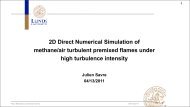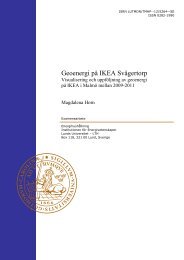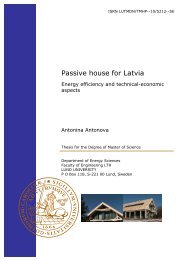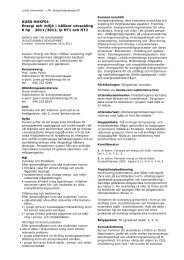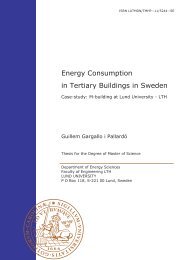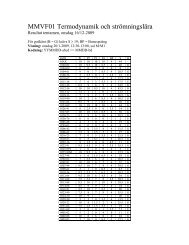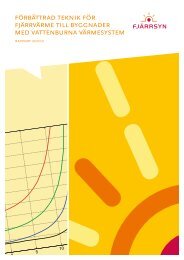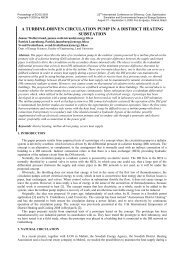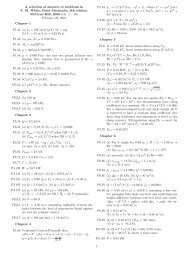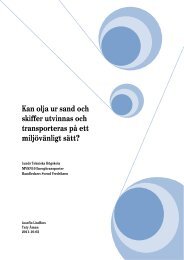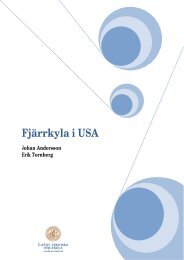MODERN THERMAL POWER PLANTS
MODERN THERMAL POWER PLANTS
MODERN THERMAL POWER PLANTS
You also want an ePaper? Increase the reach of your titles
YUMPU automatically turns print PDFs into web optimized ePapers that Google loves.
solubility of gases in saturated water is almost zero. The feedwater is heated to<br />
saturation by adding steam in a closed tank. The steam and the gases will rise to the<br />
surface where they are cooled, and the gases and some steam are vented out of the<br />
system at the top of the deaerator.<br />
The steam turbine in a combined cycle has two special features. Firstly, largescale<br />
combined cycles normally generate steam at more than one pressure level (the<br />
reason for this is explained in Section 3.3), and therefore the steam turbine is<br />
equipped with steam induction points. Large steam turbines consist of a number of<br />
turbine cylinders and the induction point will normally be located between them.<br />
The other special feature is the load control method. The steam production will vary<br />
with the ambient conditions as a result of the steam cycle being powered by energy<br />
from the gas turbine exhaust. To control the steam production, a method called<br />
variable pressure control is used in the steam cycle. A conventional steam boiler<br />
plant sometimes uses partial-arc control, which has superior part-load efficiency.<br />
Partial-arc control utilizes a fixed pressure in the boiler at all loads, giving high partload<br />
efficiency. However, a constant pressure in the boiler is undesirable for the heat<br />
recovery in the HRSG. With a fixed evaporation pressure the HRSG becomes stiff,<br />
inflexible and inefficient. The part-load efficiency of the turbine is secondary to<br />
efficient heat recovery. Instead of using a fixed pressure, the combined-cycle<br />
bottoming cycle is controlled by sliding pressure control. Sliding pressure control<br />
means that the inlet control valves are always fully open so that the admittance<br />
pressure is sliding or floating. When the control valve is open, the inlet volume flow<br />
is constant at all loads, resulting in a more or less fixed pressure ratio over the first<br />
stage. Therefore, the temperature gradients are much smaller than those in partialarc<br />
control.<br />
Large high-pressure CCPPs have three pressure levels and reheating. Therefore,<br />
the steam turbine has induction points for each pressure level. A modern highperformance<br />
CCPP of today has a steam admittance pressure of 160-180 bar at<br />
600 °C.<br />
2.1.3 The heat recovery steam generator<br />
The task of the HRSG is to transfer heat from the gas turbine exhaust to the<br />
bottoming steam cycle. The HRSG consists of a set of heat exchangers that transfer<br />
the heat from the gas to water. The heat transfer in a HRSG mainly consists of<br />
convection, unlike the ordinary steam boiler where radiation contributes to the heat<br />
transfer. The simplest form of HRSG operates at only one pressure level. This means<br />
that water only boils at one pressure. To increase the efficiency of the HRSG<br />
11



